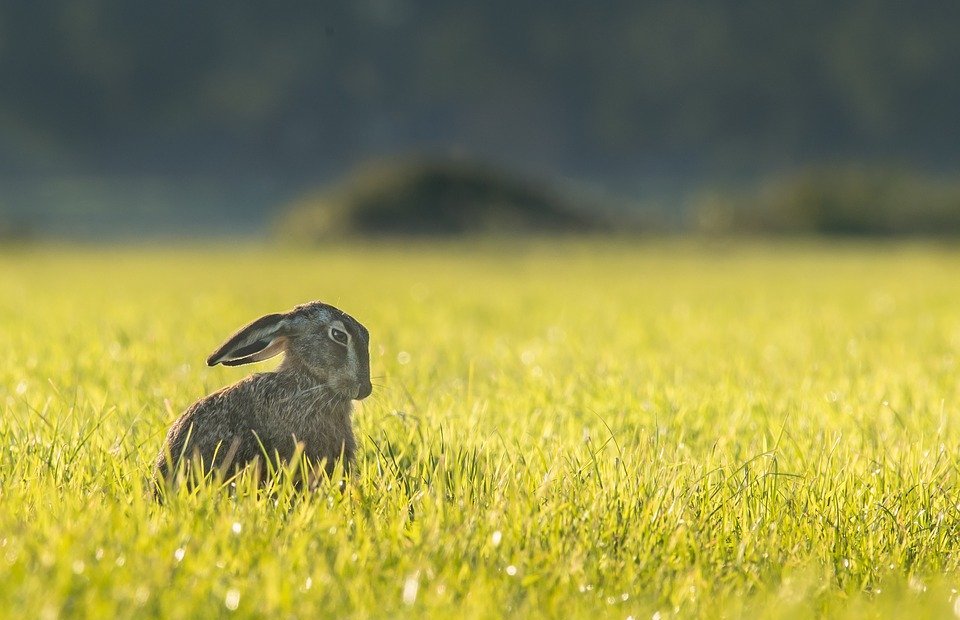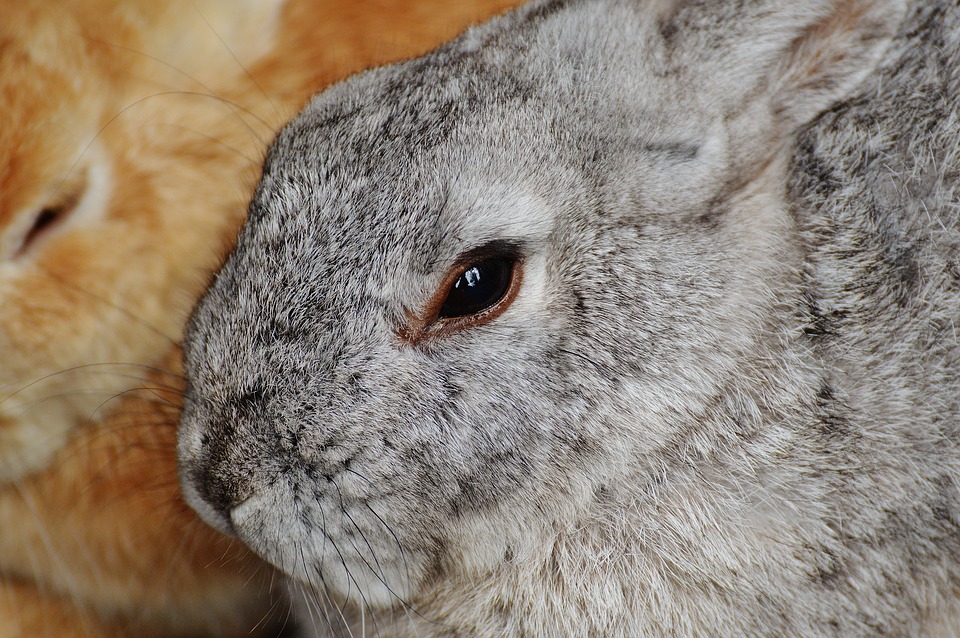This comprehensive guide will unravel the intricacies of feeding your beloved bunny, providing a thorough understanding of their nutritional needs and dietary requirements. We'll explore the fundamental principles of a rabbit's diet, delve into the specific types of foods they should consume, and highlight the importance of safe feeding practices. We'll also address common concerns through a detailed FAQ section, ensuring you have all the information you need to provide your furry friend with a healthy and happy life.
Part 1: Understanding a Rabbit's Digestive System

1.1. The Rabbit's Unique Digestive System:
Rabbits have a digestive system uniquely adapted for consuming a diet high in fibre. Their digestive tract is longer than that of other herbivores, allowing for extended fermentation and nutrient absorption. This process is crucial for breaking down complex plant matter and extracting essential nutrients.
1.2. The Role of Cecal Fermentation:
Rabbits practice a unique digestive process called cecal fermentation. After initial digestion in the stomach and small intestine, food travels to the cecum, a large pouch in the gut where bacteria break down fibre. The cecum produces "cecotropes", soft, nutrient-rich faecal pellets that rabbits re-ingest, providing vital nutrients.
Part 2: The Foundation of a Healthy Diet: Hay

2.1. The Importance of Hay:
Hay is the cornerstone of a rabbit's diet, providing essential fibre and promoting digestive health. It also encourages chewing, which is crucial for maintaining their teeth.
2.2. Different Types of Hay:
Timothy Hay: Ideal for adult rabbits, Timothy hay is low in calories and high in fibre, perfect for maintaining a healthy weight and preventing dental issues.
Meadow Hay: A blend of grasses and herbs, meadow hay offers a wider variety of flavours and nutrients.
Alfalfa Hay: Rich in calories and calcium, alfalfa hay is suitable for growing kits, pregnant or lactating does, and senior rabbits with specific nutritional needs.
Oat Hay: A good source of fibre and calcium, oat hay can be offered in moderation as a supplement.
2.3. Choosing and Storing Hay:
Quality Matters: Select hay from reputable sources, ensuring it is free of dust, mold, and foreign matter.
Freshness is Key: Offer fresh hay multiple times daily, as it can quickly become stale.
Proper Storage: Store hay in a dry, airtight container to prevent spoilage and maintain its nutritional value.
Part 3: Pellet Supplements
3.1. The Role of Pellets:
Pellets act as a supplementary food source, providing a concentrated source of vitamins and minerals to complement hay.
3.2. Choosing the Right Pellets:
Rabbit-Specific Formula: Opt for high-quality pellets specifically formulated for rabbits, avoiding those with fillers, artificial colours, flavours, and preservatives.
Limited Ingredients: Look for pellets with a simple ingredient list, featuring essential nutrients and avoiding unnecessary additives.
Appropriate Pellet Size: Choose pellets that are small enough for your rabbit to chew easily, preventing choking hazards.
3.3. Feeding Guidelines for Pellets:
Limited Amount: Provide a small amount of pellets daily, based on your rabbit's age, size, and activity level.
Fresh Water: Always ensure a clean and constant water source.
Avoid Free-Feeding: Limit access to pellets to prevent overeating and obesity.
Part 4: Fresh Foods for Variety and Enrichment
4.1. The Value of Fresh Foods:
Fresh foods, including leafy greens and vegetables, offer essential vitamins, minerals, and added flavour, making your rabbit's diet more enjoyable.
4.2. Safe and Suitable Fresh Foods:
Leafy Greens: Offer a variety of leafy greens, such as romaine lettuce, kale, spinach, parsley, and cilantro.
Vegetables: Include safe vegetables like carrots (in moderation), broccoli, bell peppers, zucchini, and dandelion greens.
Fruits: Offer small portions of safe fruits like strawberries, blueberries, and bananas (only occasionally).
4.3. Introducing New Foods Safely:
Gradual Introduction: Introduce new foods slowly, offering a small amount at first to monitor your rabbit's reaction.
Watch for Digestive Upsets: Observe for any signs of diarrhoea, gas, or other digestive issues.
Variety is Key: Offer a variety of safe fresh foods to ensure a balanced diet.
Part 5: The Crucial Role of Water
5.1. Water: Essential for Life:
Water is crucial for maintaining hydration, regulating body temperature, and supporting vital bodily functions.
5.2. Providing Fresh Water:
Clean Water Source: Always offer fresh water in a bowl or bottle, ensuring it is clean and accessible.
Multiple Water Sources: Consider providing multiple water sources, especially if you have multiple rabbits.
Regular Cleaning: Clean water bowls and bottles daily to prevent bacteria growth.
5.3. Ensuring Adequate Hydration:
Monitor Water Consumption: Observe your rabbit's water intake to ensure they are sufficiently hydrated.
Fresh Hay Encourages Drinking: Hay helps stimulate water consumption due to its fibrous nature.
Offer Wet Foods: Occasionally provide wet foods like leafy greens to encourage water intake.
Part 6: Understanding Toxic Foods
6.1. Avoiding Toxic Foods:
Many common foods are toxic to rabbits and can cause serious health problems. It's vital to understand which foods to avoid to keep your rabbit safe.
6.2. Common Toxic Foods:
Chocolate: Contains theobromine, a toxic compound that can be fatal to rabbits.
Onions and Garlic: Contain compounds that are toxic to red blood cells and can cause anemia.
Avocado: Contains persin, which can cause heart problems and respiratory failure.
Dairy Products: Rabbits are lactose intolerant and cannot digest dairy products.
Grains: Wheat, barley, and corn should be avoided as they are high in carbohydrates and can cause digestive issues.
Seeds: Sunflower seeds, pumpkin seeds, and other seeds are high in fat and should be limited.
Nuts: Macadamia nuts, walnuts, and other nuts are toxic to rabbits.
Alcohol: Even small amounts of alcohol can be fatal to rabbits.
6.3. Preventing Accidental Ingestion:
Know Your Rabbit's Diet: Learn about safe and toxic foods and keep a list handy for reference.
Store Food Safely: Store food in secure containers to prevent access by rabbits.
Supervise Interactions: Supervise your rabbit's interaction with humans and children to ensure they don't eat anything harmful.
Part 7: Special Dietary Needs
7.1. Feeding Pregnant and Lactating Does:
Increased Nutritional Requirements: Pregnant and lactating does require a higher intake of calories and nutrients to support their growing kits.
Alfalfa Hay: Offer more alfalfa hay to provide additional calcium and calories.
Pellet Increase: Increase the amount of pellets provided to meet their increased energy demands.
7.2. Feeding Young Kits:
Mother's Milk: Kits are initially nourished by their mother's milk.
Gradual Introduction of Solids: Gradually introduce solid foods starting around 3 weeks of age, offering small amounts of pellets and hay.
High-Quality Food: Provide high-quality pellets and hay specifically formulated for kits, ensuring adequate nutrition for their growth and development.
7.3. Feeding Senior Rabbits:
Reduced Energy Needs: Older rabbits may have reduced energy needs and may benefit from a lower-calorie diet.
High-Quality Hay: Ensure they have access to high-quality hay to support dental health and digestion.
Limited Pellets: Reduce the amount of pellets offered to prevent obesity.
Part 8: FAQs:
8.1. How much hay should my rabbit eat?
Hay should make up 80% of your rabbit's diet. Offer an unlimited amount of fresh hay multiple times a day.
8.2. Can I give my rabbit lettuce?
While romaine lettuce is generally safe, it is low in nutritional value. Offer a variety of other leafy greens instead.
8.3. My rabbit doesn't seem to like water. What can I do?
Provide fresh water in multiple locations and offer wet foods like leafy greens to encourage drinking.
8.4. What are the signs of a healthy rabbit?
A healthy rabbit will have shiny fur, bright eyes, a healthy appetite, and firm, round droppings.
8.5. My rabbit is overweight. How can I help them lose weight?
Consult your veterinarian for advice on adjusting your rabbit's diet and exercise routine.
8.6. Can I give my rabbit human food?
Avoid giving your rabbit human food, as most human foods are toxic or unhealthy for them. Stick to a rabbit-specific diet.
8.7. What should I do if my rabbit is not eating?
A loss of appetite in rabbits can be a sign of illness. If your rabbit isn't eating, consult a veterinarian immediately.
8.8. How often should I change my rabbit's hay?
It's best to offer fresh hay multiple times a day, as it can quickly become stale and less appealing.
Everyone is watching
-

Do Rabbits Lay Eggs? (The Surprising Truth)
OTHER TYPES OF PETSThis article will unravel the common misconception that rabbits lay eggs, exploring the fascinating world of r...
-

Can Rabbits Eat Grapes? A Guide to Safe Rabbit Treats
OTHER TYPES OF PETSThis comprehensive guide will explore the safety and suitability of grapes for rabbits, providing detailed inf...
-

What's a Group of Rabbits Called? (A Comprehensive Guide)
OTHER TYPES OF PETSThis article delves into the fascinating world of rabbits, exploring the various terms used to describe a grou...
-

Predators That Hunt Rabbits: A Guide to Natural Enemies
OTHER TYPES OF PETSI've always been fascinated by the circle of life, that delicate dance between predator and prey. Growing up ...
-

Are Rabbits Nocturnal Animals?
OTHER TYPES OF PETSThe question of whether rabbits are nocturnal animals is a fascinating one, with a surprisingly complex answer...
